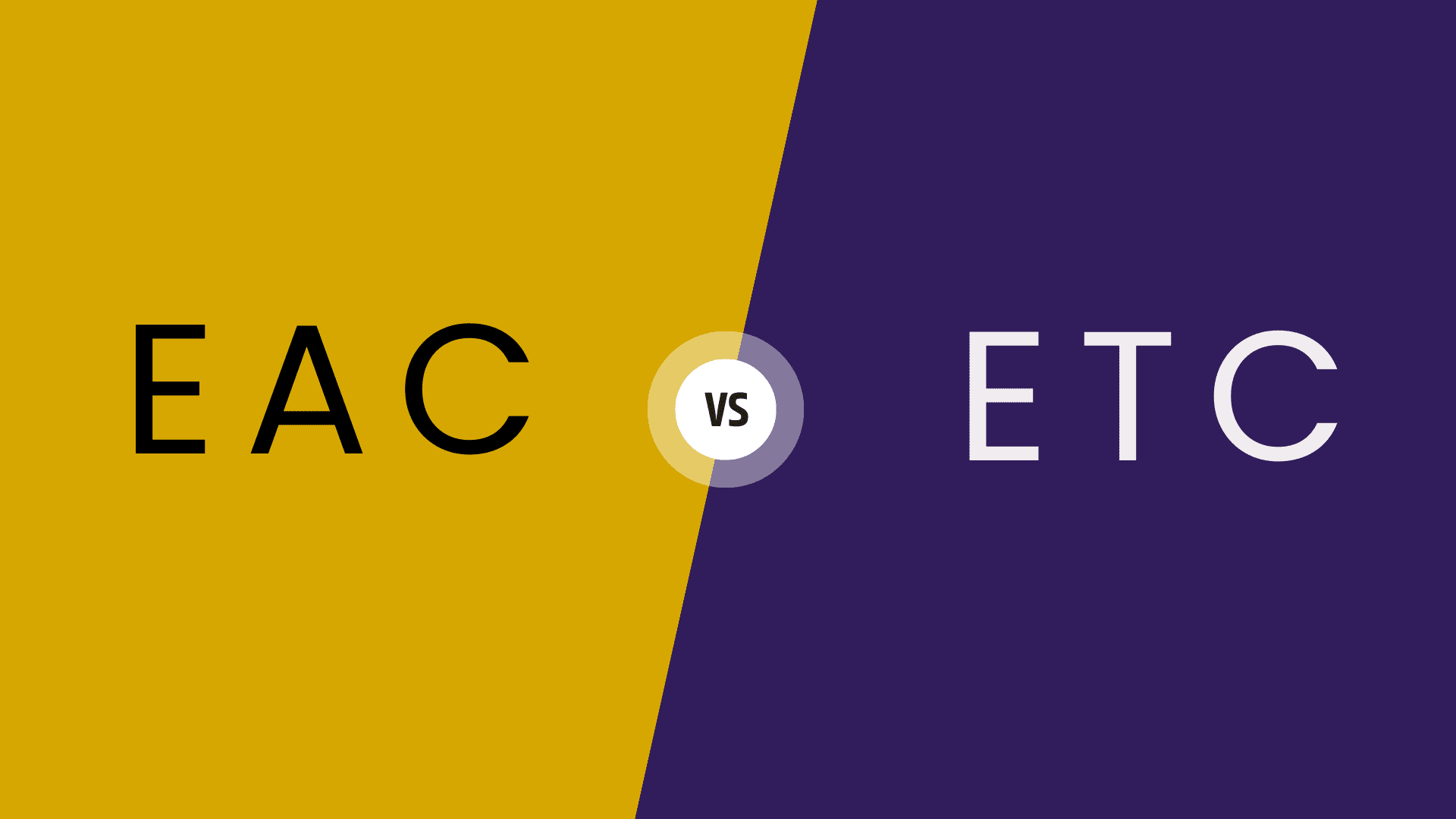Estimate at Completion (EAC) and Estimate to Complete (ETC) are two terms everyone working on project management has probably heard. These forecasting metrics in cost management provide information on budget requirements to complete the project.
In today’s post, we will discuss EAC and EAC and their differences.
Estimate at Completion (EAC)
Estimate at Completion (EAC) is the total cost required to complete the project from any given point. It includes the actual cost spent to date plus the estimated cost required to complete the remaining work.
Formula to Calculate the EAC
The two popular cases to calculate the EAC are as follows:
- EAC = AC + (BAC – EV), which assumes that any remaining work is performed at the budgeted rate.
- EAC = AC + (BAC – EV) / CPI, which accounts for the current cost performance index (CPI).
Please read my post on Estimate at Completion to study this concept in detail.
EAC lets you know if the project will likely be completed over or under budget. A lower EAC than the original budget (Budget at Completion) indicates cost savings, while a higher EAC suggests cost overruns.
Estimate to Complete (ETC)
Estimate to Complete (ETC) is the estimated cost required to complete the remaining project work. It shows how much funding you need to finish the remaining work if you continue to perform with the current cost performance.
Formula to Calculate ETC
The formula to Calculate ETC is as follows:
ETC = EAC – AC, ETC is calculated by subtracting the Actual Cost (AC) from the Estimate at Completion (EAC).
Please read my post on Estimate to Complete to study this concept in detail.
If the ETC is lower than the remaining budget, it indicates that the project is progressing, and you can complete it without crossing the budget or cost baseline. Alternatively, a higher ETC suggests you may need additional funding to complete the project.
Summary
ETC and EAC are important metrics for project managers to assess the current performance of a project and forecast future performance. Regularly monitoring these metrics allows project teams to make informed decisions, implement corrective actions, and ensure that the project stays on track to complete the project successfully.

I am Mohammad Fahad Usmani, B.E. PMP, PMI-RMP. I have been blogging on project management topics since 2011. To date, thousands of professionals have passed the PMP exam using my resources.







